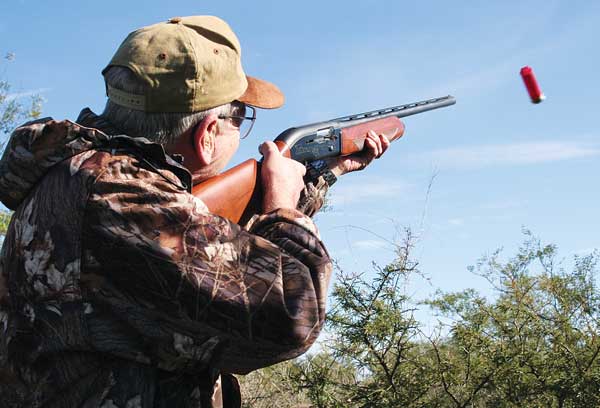

Poor Timing
A major problem that many shooters seem to have when shooting afield is poor timing. This can be a result of virtually anything from having the gun out of position to get it on the shoulder properly, to an inconsistent gun pace relative to the pace of the target or an overzealous trigger hand racing to mount the gun.
Poor timing can be a reason for missing that might occur at any time, and can be most easily cured by proper target focus, a good gun mount and solid technique. The problems with a shooter’s timing are most often caused by a lack of concentration and an inconsistent gun swing relative to the speed, angle and distance of his target. When a shooter fails to recognize and react to these target characteristics, chances are that a miss is imminent.
Timing is based on how a shooter moves relative to the movement of his target. Chances are if he overreacts to a flushing or passing bird, for instance, he will rush the gun past it before the trigger can be pulled. On the other hand, if he is slow to swing the gun when a bird presents itself, he will invariably wind up behind his target.
Let’s not forget that the most accomplished wingshooters you will ever see look to be in slow motion. They only react to the speed of the bird they are attempting to harvest, and they can change their speed to compensate for the speed of the target. They do this by making sure that step one in the shot process is visual focus on a chosen target. When the birds are fast, they move fast. When they are slow, they move slow. Once a shooter’s eyes have focused on a bird, the most important part of the shot sequence is to move as the bird moves, and then a bit more to execute a chosen shooting style and complete the shot.
By matching up his initial pace with that of the bird, the shooter will always be able to comfortably get his gun in position to make a clean kill, and he will find that keeping his target in view with the gun mounted will be much easier. This will be the case regardless of which shooting style is used, since the speed of the gun for pull away and swing through don’t increase until the insertion point is made.
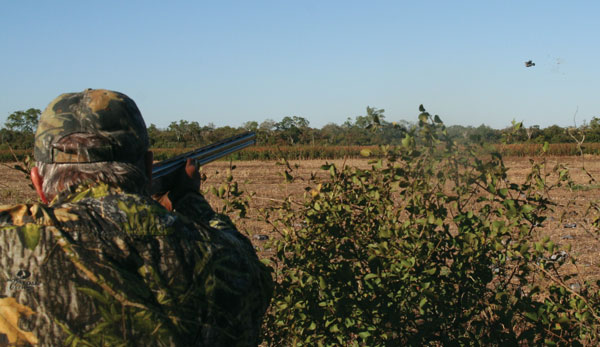
Focusing on the Gun and Not the Target
One of the more common reasons that shooters miss in the field is because they focus more on the gun than on the target. In other words, they are in effect aiming at the bird. Most shooters got their shooting legs at an early age by plinking away with a .22 caliber rifle. Unfortunately the only similarity between rifles, shotguns and pistols is that they are all classified as firearms. Shooting them is as different as day and night.
In order to consistently hit a target using a precise aiming point with a rifle or pistol, the shooter must align front and rear sights with a focus primarily on the sights. In most cases the targets for rifle and pistol shooting are stationary, which allows the shooter the time to make his precise sight alignment. Herein lies the main difference between these three types of firearms.
In wingshooting the targets fly at various rates of speed, and a successful shot requires the shooter to focus on the target and not the gun. Since a shotgun has no visible rear sight, the shooter’s master eye serves as the sight. As a result, the eye and the front bead on the shotgun have to align perfectly when the gun is mounted to the face and shoulder if the gun is to shoot where the eyes look.
In many instances, however, the shooter wants to make sure that this alignment is correct, and the tendency is to transfer the eyes from the target back to the gun. Once the eyes shift to the gun, the shooter loses touch with his target. When this happens, the shooter will attempt to find the bird again. Since the eyes lead the hands in shotgunning, the gun will go to the bird rather than to the proper lead, which in turn affects the timing of the shot.
The correct procedure for the shooter to be successful is to focus on the bird while having a soft focus on the muzzle of the gun. In other words, the shooter must be aware of the gun without aiming at the target, and by looking beyond the gun and to the target, the gun should shoot where he looks. Can you see now how important visual focus is to a successful shot? Having an idea of the type of lead picture required will certainly simplify this procedure, but as we have already established, it is amazing how the eyes find the proper lead picture when the shooter does everything else right.
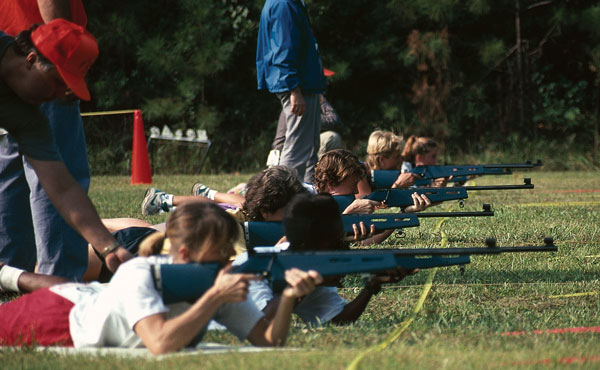
Poor Gun Mount
Once a shooter has fitted his gun properly, a large number of his misses will be a result of a poor gun mount. As alluded to earlier, the mechanics of a proper gun mount are critical to shooting success.
It’s important to keep in mind that mastering the motor skills required to mount the gun consistently in the same spot on the face and shoulder every time does require practice. Unfortunately, the majority of casual bird hunters would never think of practicing gun mounts on a daily, or at least periodic basis, like many of the top clay shooters do.
The difference between that casual shooter and a seasoned sporting clays enthusiast is easily noted, but both of them have to be able to mechanically mount the gun to be successful. Perhaps that’s why most competitive sporting clays shooters often fare better on live birds than their trap or skeet counterparts. Being able to properly control the movement of the gun’s muzzle starts with a mastery of the gun mount, and once the muscle movement for the mount has been memorized the shooter will find it easier to get the gun in position for a successful shot.
Don’t forget that a proper gun mount is a push to the bird and insertion point and a lift of the stock to the face with the trigger hand. The hands work as a team, with neither exerting more push or lift than the other. And since gun mounts can be practiced away from the range and field, getting the proper mechanics dialed in perfectly is simply a matter of time and a desire to do so.
Incorrect Technique
When a shooter misses a bird because of incorrect technique, it is generally accepted that his mistakes were the result of trying to apply a certain shooting style that didn’t comfortably suit the target he was shooting. We have established that any of the various recognized shooting styles used worldwide will work for a shooter as long as the technique is applied properly. The main reason that incorrect technique misses birds is because most shooters don’t fully understand the orthodox use of recognized shooting styles.
A shooter should always keep in mind that the more a bird crosses in front of him, the more forward allowance or lead will be required to successfully hit it. As a result, if he is shooting at a bird that requires a good bit of lead, it would generally be a mistake to start the gun well behind the bird to obtain that lead.
At the same time, if a bird presents itself in a manner that doesn’t take much forward allowance, he can’t expect consistent success if the gun mounts too far ahead of the bird. If a shooter feels that he is well ahead of his target, chances are he’ll have problems slowing the gun to get the right lead.
Regardless of which style he uses, his chances of a successful shot will improve if he remembers to match his pace with that of the bird early in the shot sequence. This will help make a precise insertion point much easier.
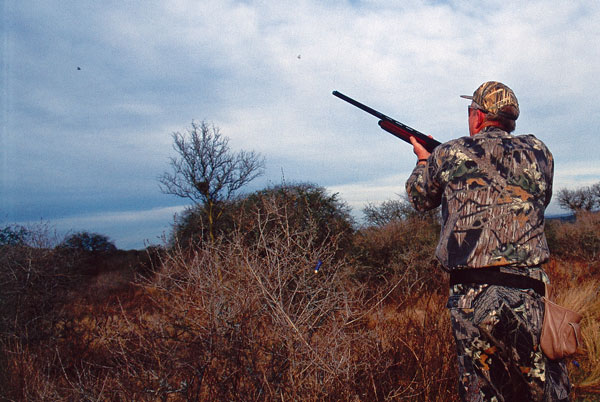
Stopping the Gun
Certainly one of the major reasons a shooter misses could be traced to our rifle shooting heritage. Since most shooters learned to shoot by aiming a rifle or pistol, chances are they will occasionally find themselves unable to get the gun sufficiently through or ahead of the bird. When a shooter’s smoothness of swing is interrupted this way, he will invariably stop the gun. If the muzzle ever stops, even briefly, the timing of the shot will be affected and the possibilities of a miss are increased.
A shooter can minimize stopping the gun by heightening his concentration and focusing on the bird, being smooth with the gun swing and remembering to follow through after the shot is taken. By concentrating on these aspects of a successful shot, the shooter can assure himself a good chance every time he shoulders the gun.
Two ways to make certain that the guy doesn’t stop is to watch the bird fall through the beads of the gun or staying in the gun as if you were going to shoot at the bird again. While these two tips sound simple, if you can make them a part of every shot in the field your shooting success will increase significantly.
A great deal of the success or failure experienced by a shooter is determined by the confidence he has in seeing lead pictures. The more often a shooter sees a bird fall or a target break with a lead picture, the more confidence he will have the next time he sees a similar shot.
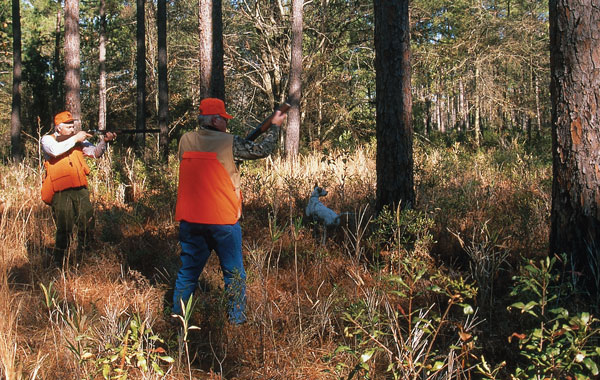
Jerking the Trigger
It’s pretty rare for the average hunter to find himself jerking the trigger or flinching when shooting live birds. This phenomenon is typically found in the intense competitive clay target shooter, who has shot literally thousands and thousands of rounds of ammunition over the years.
A flinch is best described as a mental refusal of a physical act, such as pulling the trigger. In other words, even though the shooter attempts to pull the trigger, the brain sends a message to the muscles in the trigger finger that will not allow it to move. This is most often the result of a fear of missing or the anticipation of recoil, and is almost always followed by the trigger being jerked with little or no success.
When shooting birds, hunters will usually not refuse to pull the trigger, rather they have a tendency to yank the trigger and fire the gun before it is properly positioned on the shoulder. When this happens, of course, the timing of the shot is significantly affected and the target is usually not hit.
This typically occurs on flushing birds or when the shooter is surprised by the sudden appearance of a bird. Sometimes in a rush to get off a shot, the shooter gets into the trigger too quickly. The flinch in hunting can be eliminated if the shooter realizes that he usually has more time to execute a shot than he thinks. There are no gamebirds that can outrun a speeding shotstring, so rushing a shot just isn’t necessary. By slowing down his approach to shooting the bird and giving his eyes time to focus on a specific target, the shooter will have better control of his movements and the technique required to properly mount and swing the gun. If the shooter will stay in the gun by keeping his head down and his eyes through the rib in order to watch the bird fall, he will be less concerned with shooting too quickly.
It’s been said that 60 percent of shooting is confidence. That’s confidence in yourself, confidence in the gun and confidence in your ammo. Having this level of certainty that a successful shot can be made by taking the time to properly position the gun will certainly improve one’s percentages of success afield.

Lifting the Head off the Stock
Of all the reasons for missing birds, lifting the head off the stock is probably the the most common of all. Remember that a properly fitted shotgun will allow the eyes and the gun to look and shoot to the same spot. That’s the beauty of pointing the gun rather than aiming it. So when you look through the beads on the rib of the gun, it will shoot where the eyes look. Don’t look at the beads. Just be aware of them, much like you are aware of the white lines in the center of the road when driving. You are aware of them, but your focus never goes there.
This holds true time after time, and successful shots are made consistently unless the eye/barrel/bird relationship changes. But when the head is lifted off the stock or the eyes are lifted above the sighting plane of the gun, this constitutes a change in where the eyes and gun look, which will usually constitute a miss.
A fairly common occurrence with clay shooters is not lifting the head, but merely lifting the eyes above the rib to get a better look at the target. This is especially true on targets that are dropping or have a descending line of flight. The results, however, are generally the same, and they aren’t good. Shooters guilty of lifting the eyes should remember to concentrate on their targets through the rib of the gun. Failure to do so will usually cause the gun to stop.
There are a number of reasons for the head to lift as the trigger is being pulled. If the drop on the stock is too low for the shooter, the eyes will be below the receiver and the face will have to be lifted in order to correctly see the bird beyond the muzzle. Proper gun fit, of course, will cure the problem if this is the case.
If the gun is mounted improperly, it will be difficult for the shooter to get his sight picture adjusted in the short time that a shooter generally has to take a shot at a speeding bird. Since the eyes should attempt to follow the bird, they will want to stay focused on it, so they could leave the stock if it isn’t positioned in the cheek and on the shoulder properly. Consistent gun mount practice will add to the timeliness of a proper picture and shot.
The angle of ascent or descent of a bird in flight will also cause the shooter to lift his head off the gun. If a bird flushes and rises quickly, the shooter’s tendency is to first lift the eyes above the gun to find the bird. If the eyes stay up as the bird rises, there’s a good chance that the head will come up as well. If the bird is dropping or landing, if the shooter allows it to come to the gun, chances are he will lift his head in order to keep it in sight just on top of the rib.
It has been established that in shotgun shooting the eyes lead the hands to the target and subsequently to the correct lead picture. And as long as the gun mount is correct, the head can stay down as the muzzle moves along the target line. If the lead picture is right, a successful shot will be the result.
So there you have it, a series of examples of why you miss. By identifying these individual problems and providing a fix for them, there is a good possibility that your skills in the field will improve significantly.
This article is an excerpt from the Gun Digest Book of Shotgunning.

Next Step: Get your FREE Printable Target Pack
Enhance your shooting precision with our 62 MOA Targets, perfect for rifles and handguns. Crafted in collaboration with Storm Tactical for accuracy and versatility.
Subscribe to the Gun Digest email newsletter and get your downloadable target pack sent straight to your inbox. Stay updated with the latest firearms info in the industry.


![Best Concealed Carry Guns In 2025 [Field Tested] Wilson Combat EDC X9S 1](https://gundigest.com/wp-content/uploads/Wilson-Combat-EDC-X9S-1-324x160.jpg)


![Best 9mm Carbine: Affordable PCCs [Tested] Ruger Carbine Shooting](https://gundigest.com/wp-content/uploads/Ruger-Carbine-Shooting-100x70.jpg)
![Best AR-15: Top Options Available Today [Field Tested] Harrington and Richardson PSA XM177E2 feature](https://gundigest.com/wp-content/uploads/Harrington-and-Richardson-PSA-XM177E2-feature-100x70.jpg)
